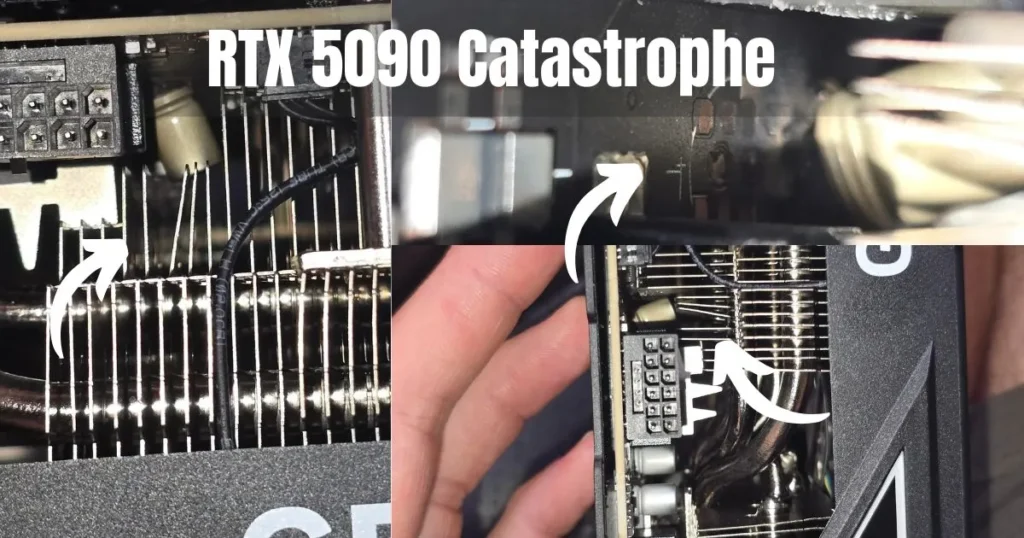A Night of Mayhem: When a flagship GPU Decides to Self-Destruct
In a terrifying incident that reads like a tech horror story, a user’s high-end NVIDIA GeForce RTX 5090 graphics card violently failed, not with a melt but with a bang. The culprit? A catastrophic capacitor explosion so powerful it warped the card’s own solid metal heatsink.

The event occurred during a late-night video editing session. The user reported a sound like a firecracker going off inside their PC case, followed by a black screen, sparks, smoke, and the acrid smell of an electrical fire. This wasn’t the now-infamous melting 12VHPWR connector issue; this was a fundamental component failure from within the card itself.
The Setup Was Supposed to Be Safe
What makes this failure so alarming is that the user seemed to do everything right. The GPU, a PNY RTX 5090 ARGB OC model, was reportedly running at a normal temperature of around 70°C. It was powered by a robust 1300-watt power supply using a native 12VHPWR cable—no sketchy adapters or daisy-chained connectors in sight. On paper, the system was built to handle the card’s 575-watt power draw with ease.
The Aftermath: A Warped Heatsink
Upon investigation, the user discovered the source of the bang: a blown capacitor. The explosion was so forceful that it physically bent the fins of the adjacent heatsink, a testament to the immense energy released in the failure. Capacitor failures, while not unheard of in older electronics, are exceptionally rare in new, flagship hardware and are typically a sign of a manufacturing defect or a faulty component.
Is This a Widespread Problem?
For now, this appears to be an isolated incident rather than a widespread design flaw. Unlike the melting connector issue that affected numerous RTX 4090 cards, a single capacitor failure points toward a potential quality control issue with that specific unit, not a systematic problem with the RTX 5090 as a whole.
However, it serves as a stark reminder of the incredible amounts of power being pushed through modern graphics cards. When components operating at these energy levels fail, they can fail dramatically.
Also, Read
- Inside China’s AI RTX 4090s GPU Black Market – A 3.5-Hour Exposé Reveals Smuggling and Modified RTX 4090s
- NVIDIA Expands RTX 50 Access – Priority Purchasing Opens in 5 European Countries
- ASUS Unveils ROG Matrix RTX 5090 – 800W Beast With Quad Fans & Liquid Metal
The Bottom Line
This dramatic failure is likely a one-off manufacturing defect, not a new crisis for NVIDIA. Owners of high-wattage GPUs should ensure they use quality power supplies and native cables to minimize risks. But as this case shows, even with the right setup, being near the cutting edge of technology can sometimes come with unexpected shocks.
Source: Reddit